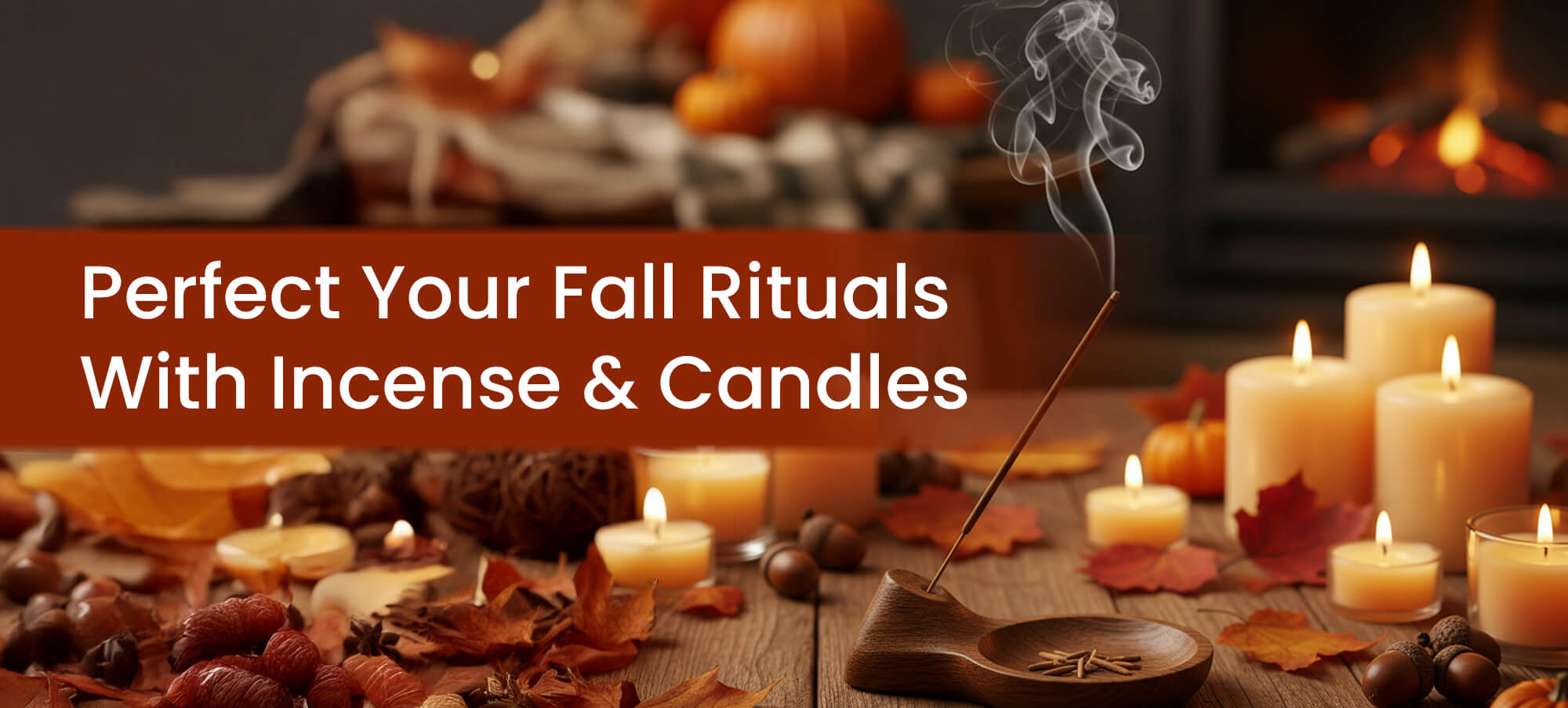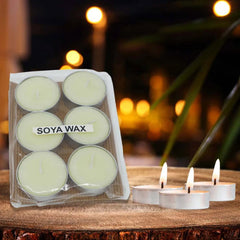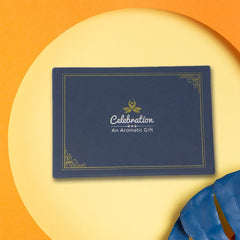
Incense vs. Candles for Cozy Fall Evenings: Which Is Better?
The days are growing shorter, the air is crisp, and the irresistible urge to cozy up our homes has arrived. Nothing sets the mood for a contemplative fall or a festive winter like a warming fragrance and a soft light. When it comes to creating this perfect sanctuary, two ancient tools stand ready: the focused smoke of incense and the gentle glow of a candle.
But which one is truly "better" for your cozy fall evenings? The answer depends entirely on your intention. Let’s break down the pros, cons, and historical significance of each, and explore how to use them together for ultimate seasonal ambiance.
The Contenders: Incense vs. Candles
Incense: The Ancient Ritual
Incense is the burning of aromatic plant matter—woods, resins, seeds, and herbs—to release fragrant smoke.
|
Pros of Incense |
Cons of Incense |
|
Intense, Quick Scent: Fills a room rapidly, perfect for a quick boost of fragrance before a gathering or yoga session. |
Produces Smoke & Ash: Can be irritating for those with respiratory issues, allergies, or asthma, and requires regular cleanup. |
|
Ritualistic & Grounding: The act of lighting it and watching the smoke is inherently meditative. |
Scent Can Be Overpowering: The aroma is often strong and lingering, which can dominate a space. |
|
Cost-Effective: Sticks and cones are generally inexpensive, offering great value for a short, powerful experience. |
Lack of Decor Integration: Incense holders are often more practical than stylish, and the product itself can look utilitarian. |
Candles: The Modern Ambiance
Scented Candles use a wick to melt and vaporize scented wax, releasing fragrance along with a soft, flickering light.
|
Pros of Candles |
Cons of Candles |
|
Creates Cozy Ambiance: The soft, flickering flame instantly sets a warm, inviting mood. |
Scent Throw Takes Time: Requires time for the wax pool to fully melt before the fragrance fills the room completely. |
|
Cleaner Burn (Natural Wax): Candles made from natural waxes like soy, coconut, palm, or beeswax produce far less soot and are generally safer for frequent use. |
Soot & Chemicals: This is the biggest drawback. Candles made from paraffin wax and synthetic fragrances can release unwanted chemicals and soot into the air. |
|
Long-Lasting & Versatile: A single candle can provide hours of fragrance and can be extinguished and relit. |
Higher Upfront Cost: High-quality, natural-wax candles are more expensive than incense. |
|
Decor: They double as attractive home decor pieces. |
Fire Hazard: As an open, sustained flame, they pose a constant fire risk if left unattended. |
The Historical Significance of Natural Incense for Mindfulness
Before fragrance was used for mere decoration, it was a profound spiritual tool. For thousands of years, burning natural incense has been an integral part of mindfulness, ritual, and spiritual practice across cultures:
-
Purification: In ancient Egypt, China, and India, the fragrant smoke was believed to purify the air, cleanse negative energy, and create a sacred atmosphere conducive to prayer and meditation.
-
A Bridge to the Divine: The rising smoke was often seen as a symbolic connection between the earthly and divine realms, carrying prayers and intentions to the heavens.
-
Focus and Calm: Traditions like Hinduism and Buddhism use scents like Sandalwood, camphor, sambrani, and Frankincense to calm the mind, deepen attention, and enhance concentration during meditation, with historical practices showing it has been used in cultural ceremonies and as a traditional remedy for various ailments, essentially serving as a simple, natural form of aromatherapy.
This deep historical use is why incense is perfect for creating a mindful moment or a specific ritual.
The Critical Choice: Natural Ingredients Only
To ensure your cozy evening is also a healthy one, the most important factor is the quality of your materials.
-
Natural Incense: Look for incense sticks or cones made from pure woods (sandalwood, cedar), natural resins (frankincense, myrrh), natural binder (jiggard powder), herbs, and essential oils. Avoid products that smell overly chemical or use synthetic binders, charcoal, and dyes, which are the main sources of harmful particulate matter when burned.
-
Natural Candles: Only use candles made from natural waxes such as Soy, Beeswax, or Coconut wax, and look for wicks made of cotton or wood. Paraffin wax is a petroleum by-product that can release soot and other toxins into the air. Similarly, choose candles scented with natural essential oils over synthetic fragrance oils.
The Best of Both Worlds: A Mix-and-Match Approach
Instead of choosing one over the other, why not use both to maximize your fall and winter ambiance? Incense and candles serve different yet complementary roles.

This mix-and-match approach allows you to use incense for intense aromatic focus, while candles provide the soft, enduring glow that defines a cozy home. With the festive season coming up, now is the perfect time to select those unique fall and winter fragrances that speak to your soul.
Safety Corner: Tips for Burning Incense and Candles
To ensure your cozy evening remains safe and serene, always follow these guidelines:
-
Never Leave Unattended: Always extinguish incense sticks and blow out candles before leaving a room or going to sleep.
-
Use Proper Holders: Ensure incense sticks are held vertically in a non-flammable holder (ceramic or brass) and that candles are placed on stable, heat-resistant surfaces or candle holders.
-
Clear the Area: Keep both candles and incense away from flammable items (curtains, paper, bedding), drafts, pets, and children.
-
Trim Wicks: For candles, always trim the wick to about ¼ inch before each burn to prevent excessive smoking and large flames.
-
Ventilation: Ensure there is some airflow in the room, especially when burning incense, to prevent the air from becoming too thick or smoky.
Final Thoughts
The debate of incense versus candles isn't about finding a single winner, but understanding their purpose. Incense is the champion of ritual and rapid scent change, ideal for short, intense moments of grounding. Candles are the masters of sustained ambiance and elegant decor, perfect for long, cozy evenings of relaxation.
For your home this season, choose the mix-and-match approach, always prioritizing natural ingredients. Select Ayurvedic candles with rich, warm essential oil notes of Cinnamon, Myrrh, or Vetiver for your living room, and keep a stash of pure Nag Champa or Sandalwood incense reserved for your mindful corner. By leveraging the specific strengths of both, you can create a multi-sensory environment that is not only inviting and aromatic but also holistically healthy.









Leave a comment
This site is protected by hCaptcha and the hCaptcha Privacy Policy and Terms of Service apply.